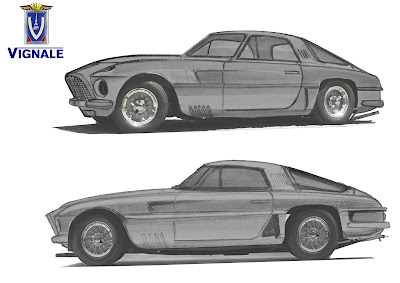While scrolling through YouTube, a clip of an old, screaming F1-style V12 engine stopped me in my tracks. That unforgettable sound led me down a rabbit hole—one that ended with a stunning, coachbuilt Ferrari from the 1950s. The car? A rare and elegant 250 Europa. And the coachbuilder behind it? None other than Vignale.
This car marked the beginning of Ferrari’s legendary 250 GT line—arguably the most iconic and successful series in the brand’s history. And more specifically, it was designed by Giovanni Michelotti, a name that may not be as well-known as Giugiaro, Gandini, or Pininfarina, but whose influence in automotive design runs deep. Michelotti crafted timeless designs for Triumph, Alfa Romeo, and even Ferrari—each filled with distinct character and elegance.
Setting the Stage: Ferrari in the 1950s
Back in the early '50s, Ferrari was still a motorsport-centric name. Its presence on the road was limited mostly to the 212 Inter, a gorgeous grand tourer powered by the Gioacchino Colombo-designed V12. Built from 1950 to 1953, its chassis borrowed heavily from the 166 MM race car, with the goal of transferring as much power to the road as possible.
Later versions of the 212 Inter introduced the ‘Tuboscocca’ tubular chassis, which improved rigidity. Coachwork was crafted by some of Italy’s finest: Vignale, Ghia, and Stabilimenti Farina. The 212 also kicked off Ferrari’s long-standing collaboration with Pininfarina, which eventually helped define the more restrained, elegant look we associate with Ferrari today—especially when compared to Vignale’s bolder style.
Enter the 250 Europa
In 1953, Ferrari unveiled the 250 Europa, with the first few examples bodied by Vignale, alongside the 340 Mexico. Unlike the Ferraris of today—impossible to miss with their flowing lines and signature red—the early Ferraris were subtle, almost understated. That makes the Vignale-bodied 250 Europa even more special.
Out of just 22 Europas built, only four wore Vignale’s dramatic design. One of them, chassis 0313EU, is the subject of this story.
This car was among the last six road-going Ferraris Vignale ever bodied. It’s a rolling sculpture—featuring bold, recessed headlights, a large single-piece chrome grille, deeply inset indicators, and generous chrome detailing, including a beautiful strip that stretches from the front arches toward the tail, emphasizing the car’s long, elegant proportions.
Engineering Highlights
Underneath the striking body, the 250 Europa featured a chassis built from longitudinal tubes with cross-bracing and body outriggers. Up front, it had independent suspension with twin wishbones, hydraulic shock absorbers, and a transverse leaf spring. The rear featured a live axle supported by semi-elliptic leaf springs and drum brakes on all four wheels.
But what really sets chassis 0313EU apart is what’s under the hood
.
While most 250s used the Colombo V12, this particular car was fitted with a Lampredi-designed 3.3L V12—originally developed for racing. Nicknamed the “long-block” engine, it first appeared in the Ferrari 275 S, producing impressive power and torque. It even helped carry racing legend Alberto Ascari to a fifth-place finish at the Belgian Grand Prix in 1952.
An American Chapter
In 1953, 0313EU was shipped to Luigi Chinetti Motors in New York, marking the early days of Ferrari’s enduring love affair with the U.S.—a market that would go on to become its largest for over 70 years.
Unfortunately, not all of its story is glamorous. In the 1960s, after moving to San Diego, the car was repainted and, tragically, had its original Lampredi V12 swapped out for a supercharged Chevrolet engine.
A Remarkable Resurrection
Thankfully, this gem was rescued. In 2003, Tom Shaughnessy brought 0313EU back into the spotlight. After years of meticulous restoration, Ferrari collector Heinrich Kämpfer completed the project in 2009. The car was returned to its original Lechleroid colour scheme—Tobacco 1039 with a Bruno Siena 1118 roof and beige leather interior.
In 2012, it was unveiled at the Concorso d’Eleganza Villa d’Este, and it looked nothing short of breath-taking.
A True Grand Touring Icon
To me, this is the perfect Italian grand tourer: a long, graceful bonnet, a mighty V12 under the hood, and chrome detailing that oozes 1950s charm—from the body trim to the spoke wheels. It’s not just a car—it’s a handcrafted tribute to an era of artistry and ambition.
The Vignale-bodied 250 Europa is more than rare—it’s a reminder of when Ferraris were shaped by hand, built with soul, and powered by engines that stirred the heart.











Interesting! I was not aware of the Vignale bodied 250 Europa. Nice sketches. Keep it going.
ReplyDeleteGood insight about the history of my favourite sports car maker. Thanks for this blog.
ReplyDeleteJanardhan
DeleteVery impressive write up on the Ferrari! Interesting facts and the sketches at the end add value to the blog! Paulomi
Delete